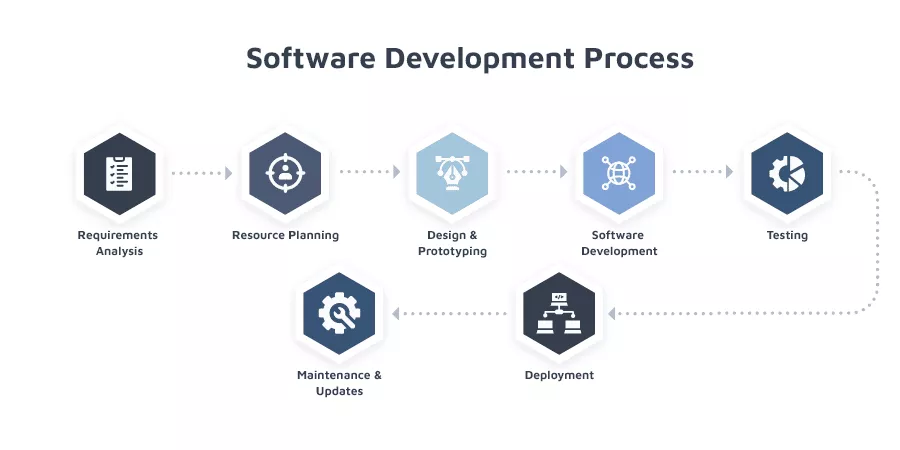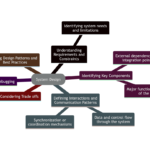As a software engineer with several years of experience, I have seen many beginners make the mistake of thinking that it is faster to start coding and finish the project rather than following the software development process including gathering requirements, analyzing, designing, implementing, testing, and documenting. While this approach may work for very small projects or personal projects, it is not suitable for larger projects or projects where the stakes are high.
In this blog post, I will explain the importance of following the software development process and provide examples of what can happen when we don’t follow the process. I will also discuss whether or not we need to follow the process for small projects and when rewriting a legacy project. By the end of this post, you will have a better understanding of why following the software development process is critical to the success of any software project, regardless of its size or complexity.
Why follow a Software Development Process?
Following a software development process is important for several reasons, including:
- Ensuring Quality: By following a development process, you can ensure that the final product meets the required quality standards. Skipping steps can lead to errors and bugs that can be costly to fix.
- Managing Risk: Developing software can be risky, especially if you skip key steps in the process. By following a process, you can identify and manage risks early on, which can save time and money in the long run.
- Meeting Deadlines: A well-defined software development process can help you meet project deadlines. By breaking down the project into smaller tasks and estimating the time required for each, you can create a realistic schedule and avoid delays.
- Improving Communication: Following a development process can improve communication between developers, stakeholders, and customers. By involving stakeholders early on in the process, you can ensure that the final product meets their needs.
What happens when you don’t follow a Software Development Process?
Skipping key steps in the software development process can lead to a range of problems, including:
Poor Quality:
Skipping steps such as testing can lead to poor-quality software that is prone to errors and bugs. This can result in the need for costly fixes, wasted time, and unhappy customers.
Suppose you skip the testing phase of the software development process. In that case, you may release software that has errors and bugs that could have been caught during testing. These bugs can lead to crashes, data loss, or other issues that could affect your customers’ experience and harm your reputation.
For instance, imagine that you are developing an e-commerce website and decide to skip the testing phase. You launch the website, and customers start to complain about not being able to place orders or having difficulties checking out. Upon investigation, you realize that there is a bug in the checkout process that is causing the website to crash, leading to lost sales and a tarnished reputation.
Delays:
Without a well-defined process, developers may spend more time trying to figure out what to do next, leading to delays in the project. This can be especially problematic when dealing with tight deadlines or competing priorities.
Suppose you skip the planning and analysis phase of the software development process. In that case, you may not have a clear understanding of the project’s requirements or goals, leading to delays in development.
For example, imagine that you are developing a mobile application for a client. You decide to start coding immediately without gathering requirements or analyzing the project’s goals. As a result, you realize halfway through the project that you have not considered essential features that the client requested, leading to delays in development while you go back and make changes.
Cost Overruns:
Fixing errors and bugs that could have been caught earlier in the process can be costly and lead to project cost overruns. This is because it takes more time and resources to fix an issue later in the development cycle than it does to catch it early on.
Suppose you skip the estimation phase of the software development process. In that case, you may not have a clear understanding of the project’s scope, leading to cost overruns.
For instance, imagine that you are developing a custom software application for a client. You skip the estimation phase and start coding immediately. As you progress through the project, you realize that you have underestimated the time required to complete certain features, leading to cost overruns and potentially lost business.
Dissatisfied Stakeholders:
Without involving stakeholders early on in the process, the final product may not meet their needs, leading to dissatisfaction and potential loss of business. This can result in negative reviews, decreased sales, and damage to the company’s reputation.
Suppose you skip the requirements-gathering phase of the software development process. In that case, you may not have a clear understanding of what the stakeholders need or want, leading to a final product that does not meet their expectations.
For example, imagine that you are developing a new software system for a company’s finance department. You skip the requirements gathering phase and start coding immediately. After you deliver the final product, the finance department realizes that the system does not meet their needs and is unable to perform essential tasks. The company may have to spend additional time and resources to fix the issue or may even need to abandon the project altogether, leading to dissatisfied stakeholders and lost business.
Inefficient Development:
Without a clear process in place, developers may find themselves spending too much time on tasks that are not critical to the project’s success. For example, suppose a development team spends hours debating the color scheme of a website or the placement of a button, even though these details have little impact on the user experience or the overall success of the project. This can result in wasted time and resources, which could have been better spent on tasks that add value to the final product.
For instance, let’s say you are developing a new mobile app, and your team spends a significant amount of time debating whether the app’s buttons should be rounded or squared. While the design of the buttons may seem important, it’s not a critical factor for the app’s success. Instead, the team could have spent that time on developing features that would add value to the app, such as integration with social media or personalized recommendations. By having a well-defined process, teams can avoid getting bogged down in unnecessary debates and focus on delivering a high-quality product efficiently, ensuring that the final product meets stakeholder needs and requirements.
So, what’s the Software Development Process?
Now that we’ve covered the importance of gathering requirements and analyzing the risks of not following the software development process, let’s take a closer look at the steps involved in the process itself. Following a standardized process for software development can help ensure that the final product meets the needs of stakeholders and customers, is delivered on time and within budget, and is of the highest quality possible. In this section, we’ll explore the six stages of the software development process and discuss how each step contributes to the success of the project. So buckle up, grab your coffee, and let’s dive into the world of the software development process!

Source: Core Activities of Software Development Process
- Requirements Gathering: The first step in the software development process is to gather requirements. This involves working with stakeholders to understand what they need and want from the software. During this phase, it’s essential to ask questions, clarify requirements, and ensure that all stakeholders are on the same page.
- Analysis and Design: Once the requirements are gathered, the next step is to analyze them and design the software architecture. This includes creating a detailed plan for how the software will be built, what technologies will be used, and how the various components will work together.
Learn how a Data Flow Diagram can help you analyze and design your project. - Implementation: The implementation phase involves actually writing the code for the software. During this phase, it’s essential to follow best practices and coding standards to ensure that the code is maintainable, scalable, and well-documented.
- Testing: The testing phase involves verifying that the software works as intended and meets the requirements gathered during the first phase. This includes unit testing, integration testing, and system testing.
- Deployment: Once the software has been tested and is ready for production, it’s deployed to the production environment. This involves configuring the hardware and software infrastructure required to run the software and ensuring that everything works as expected.
- Maintenance: The final phase of the software development process is maintenance. This involves fixing bugs, making updates, and ensuring that the software remains functional over time. Maintenance is an ongoing process that is essential to ensure that the software continues to meet the needs of stakeholders and customers.
Following this process can help ensure that software is developed efficiently, effectively, and with the highest quality possible. It can also help prevent issues down the line and ensure that the final product meets the requirements and needs of stakeholders and customers.
Conclusion
In conclusion, following the software development process is essential for the success of any software project, regardless of its size or complexity. By taking the time to gather requirements, analyze risks, design a robust architecture, write maintainable code, thoroughly test the software, and ensure that it works as expected in the production environment, we can avoid costly mistakes, delays, and failures.
As software engineers, we have a responsibility to deliver high-quality software that meets the needs of our stakeholders and customers. By following the software development process, we can ensure that our software not only meets these needs but also helps our customers achieve their goals and solve their problems.
So the next time you start a software project, take a moment to pause and consider the importance of the software development process. Remember that following this process can help you create software that is not only functional and efficient but also reliable and easy to maintain. By doing so, you’ll be well on your way to becoming a successful software engineer and delivering software that makes a positive impact on the world.


Pingback: The Fundamentals of System Design for Software Engineers